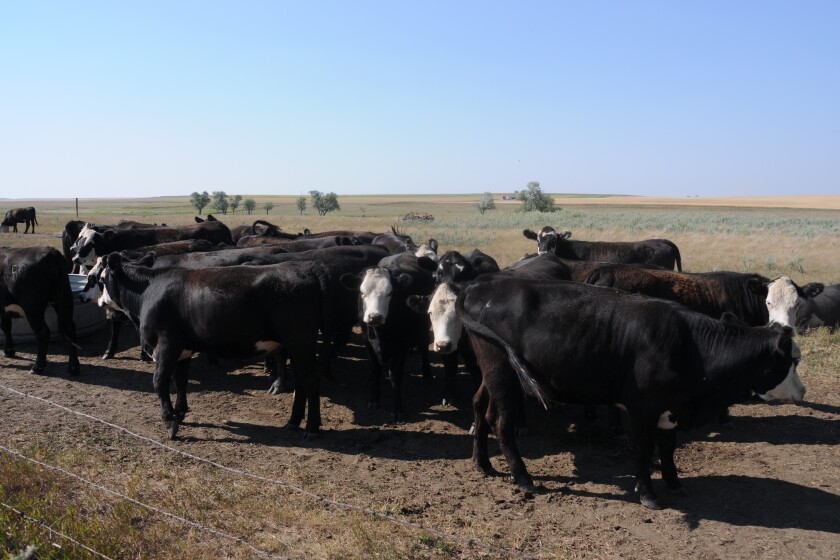Largest County in North Dakota to Raise Beef Cattle

There is no question about where the beef is in North Dakota. It's everywhere.
Based on information from the North Dakota Department of
Agriculture, cattle outnumber the people who reside in the state by a ratio of almost 3-to-1.
And at least some of the state's strength in production can be attributed to the beef cattle, which accounts for $600 million of North Dakota's agricultural income, according to Department of Agriculture.
"This is traditional cattle country," said Larry Schnell, manager of Stockmen's Livestock Exchange in Dickinson and an ex-officio member of the North Dakota Beef Commission, which promotes the state's beef industry. "The land may not be good enough to grow some of the more high dollar crops, but the quality of the grasses out here is good for the cows."
Schnell's best estimatant was that the beef cattle industry in North Dakota is likely to rank in the Top 10 or 15 nationally, an
estimation that seems to be right on par with the statistcs.
According to statistics provided by the U.S. Department of
Agriculture -- the most recent year for which data is available --North Dakota contributed 2 percent to the nation's total cattle inventory that year.
Texas contributed the largest percentage -- 14 percent --
followed by Kansas and Nebraska with 7 percent, and Oklahoma and California with 6 percent.
Ten states, including North Dakota, each contributed 2 percent to the total cattle inventory that year, according to the statistics.
Cattle can be found grazing in towns across North
Dakota, but the top cattle-producing county in the state is Morton County, said Jackie Buckley, the county's North Dakota State University extension agent.
Across North Dakota, Buckley said there are about 1.7 million cattle and calves, which is down from an estimated 2 million
cattle and calves in 1997.
"The aging population of the producers is one reason behind that," she said. "Another is our high crop prices that have caused people to sell their cows and go into other areas of farming. People also sold a lot of calves a year or so ago because the market was so good for them, and they haven't built their herds back up."
Buckley also said that the drought conditions in much of the region are playing a big part in the current nationwide drop in cattle inventory.
"We had a dry summer this year, so a lot of people were selling off their cattle," she said. "I know that the
Department of Agriculture has hired someone to help with the buildup of the state's cattle inventory, so the state is trying to move things in the right direction for the cattle industry here."
Though cattle prices are linked closely to the cost of corn, South Heart farmer Jerry Wagner, who has had a yearling
operation for 32 years, said he sees a bright future ahead for North Dakota's cattle industry.
"The hay shortage has also impacted the prices, but if we get some moisture next year and the corn crop is good, I think it will be fine," he said. "I think the cattle industry is in great shape and will do better. I feel like you have to be optimistic about it."
Schnell, whose family has been involved in the cattle industry for decades, said the selling of cattle is slow at the moment.
But he expects to see cattle sales begin to pick up in October and extend into February or March, during the typical cattle
selling season.
He said North Dakota's beef cattle production is
bolstered by the state's farmers, who take pride in their
livelihoods and what they are able to contribute to the public through agriculture.
"Most (beef cattle) producers here take what they do seriously because it is their main job and not something they do on the side," Schnell said. "They really watch the genetics of their animals, as well as keep an eye on the nutrition and health of their cows."
Source: https://www.thedickinsonpress.com/news/grazing-in-cattle-country
0 Response to "Largest County in North Dakota to Raise Beef Cattle"
Post a Comment